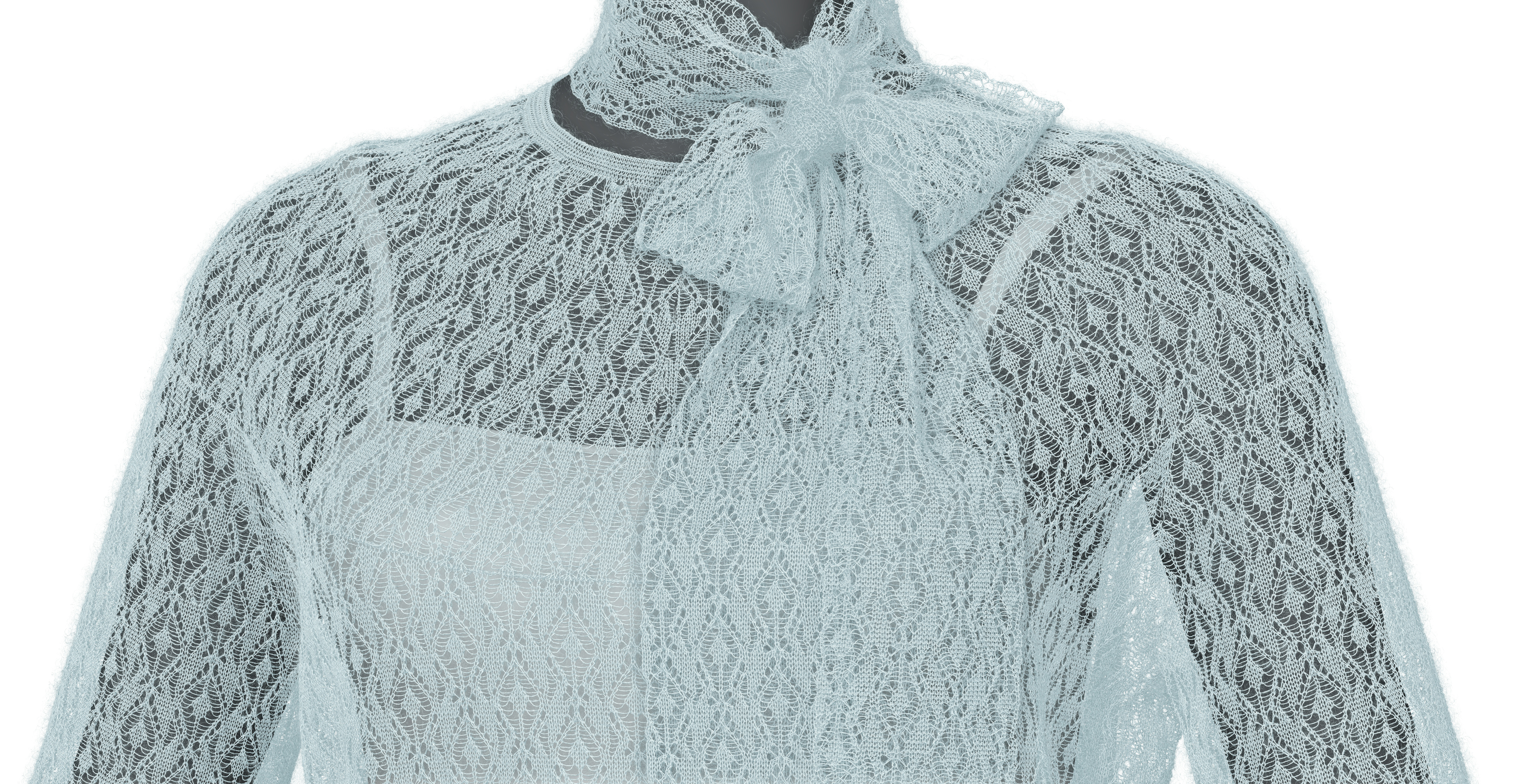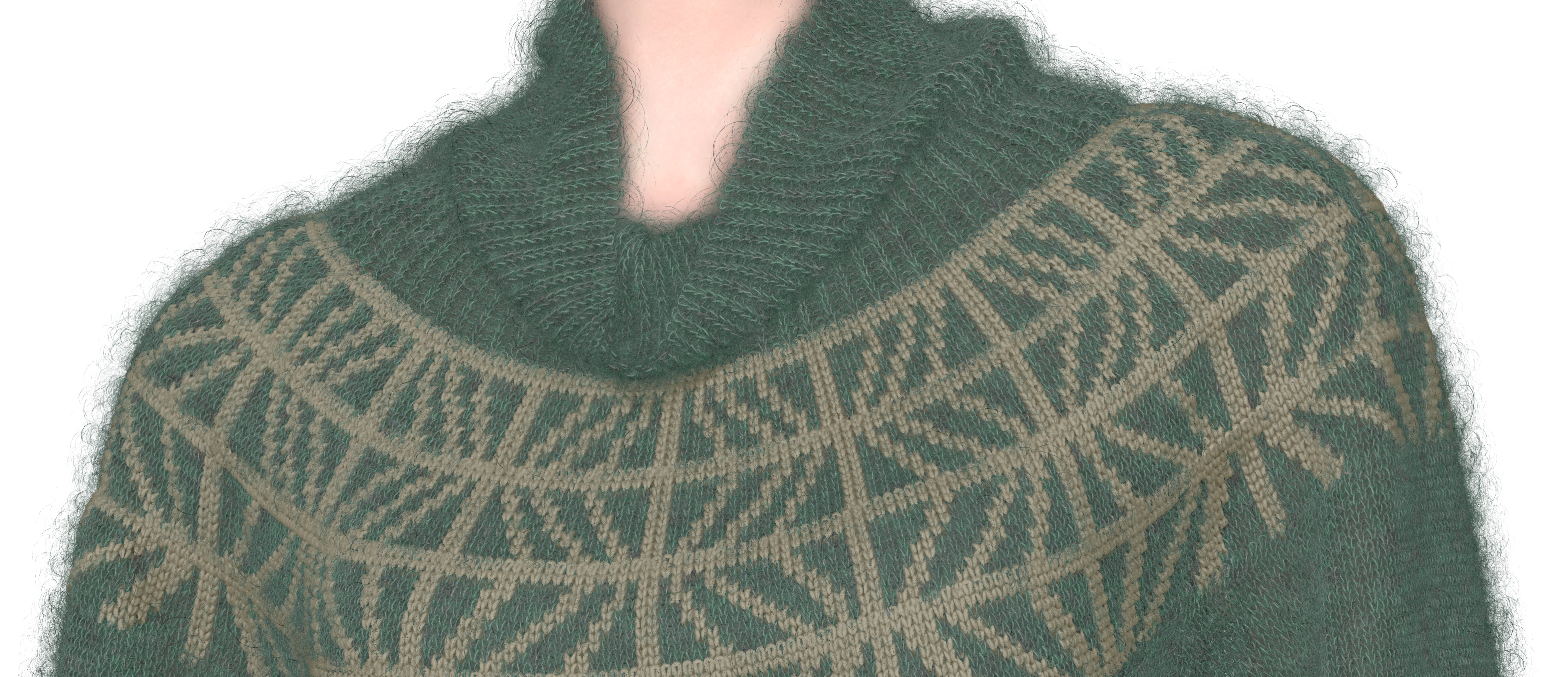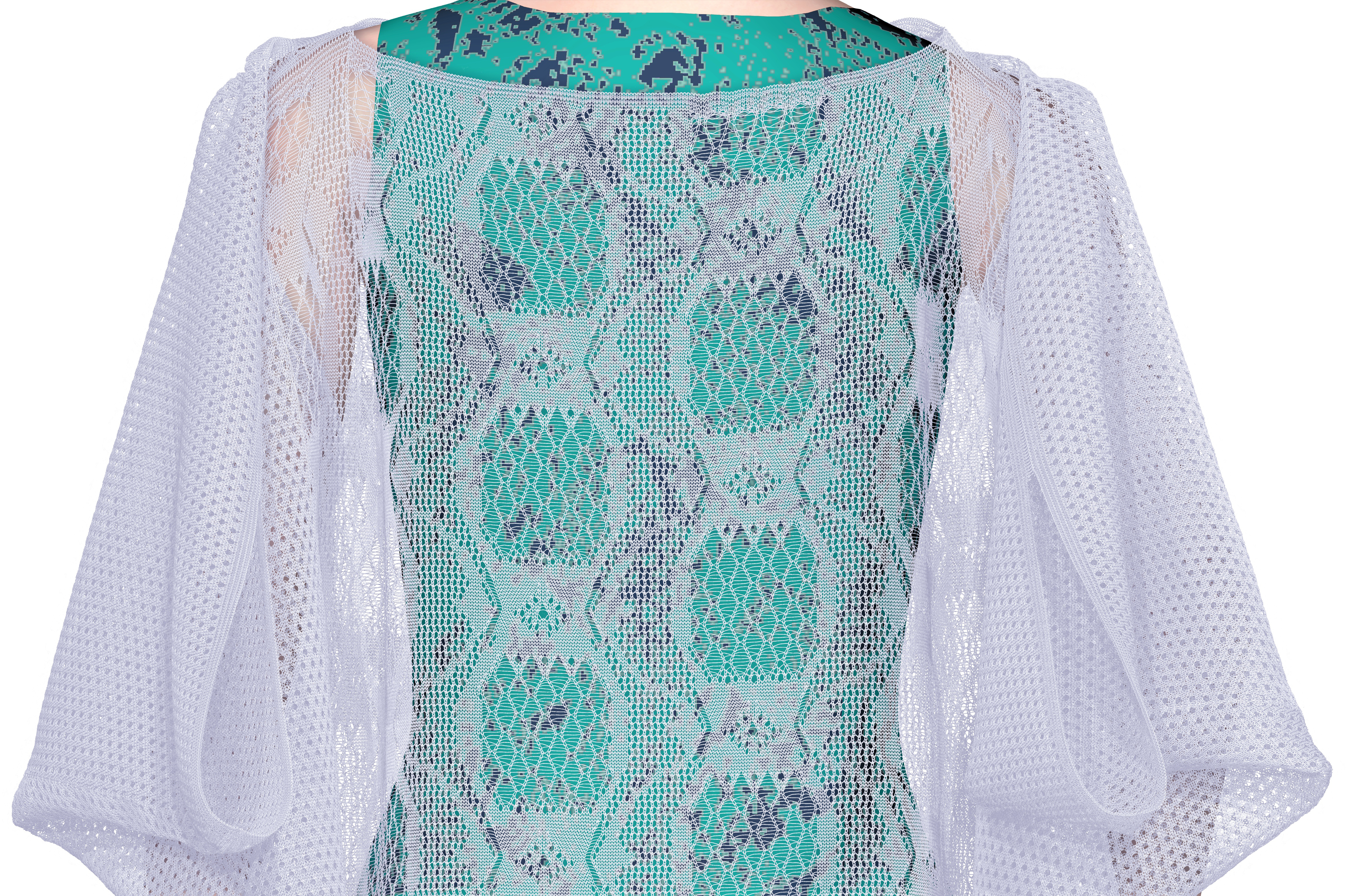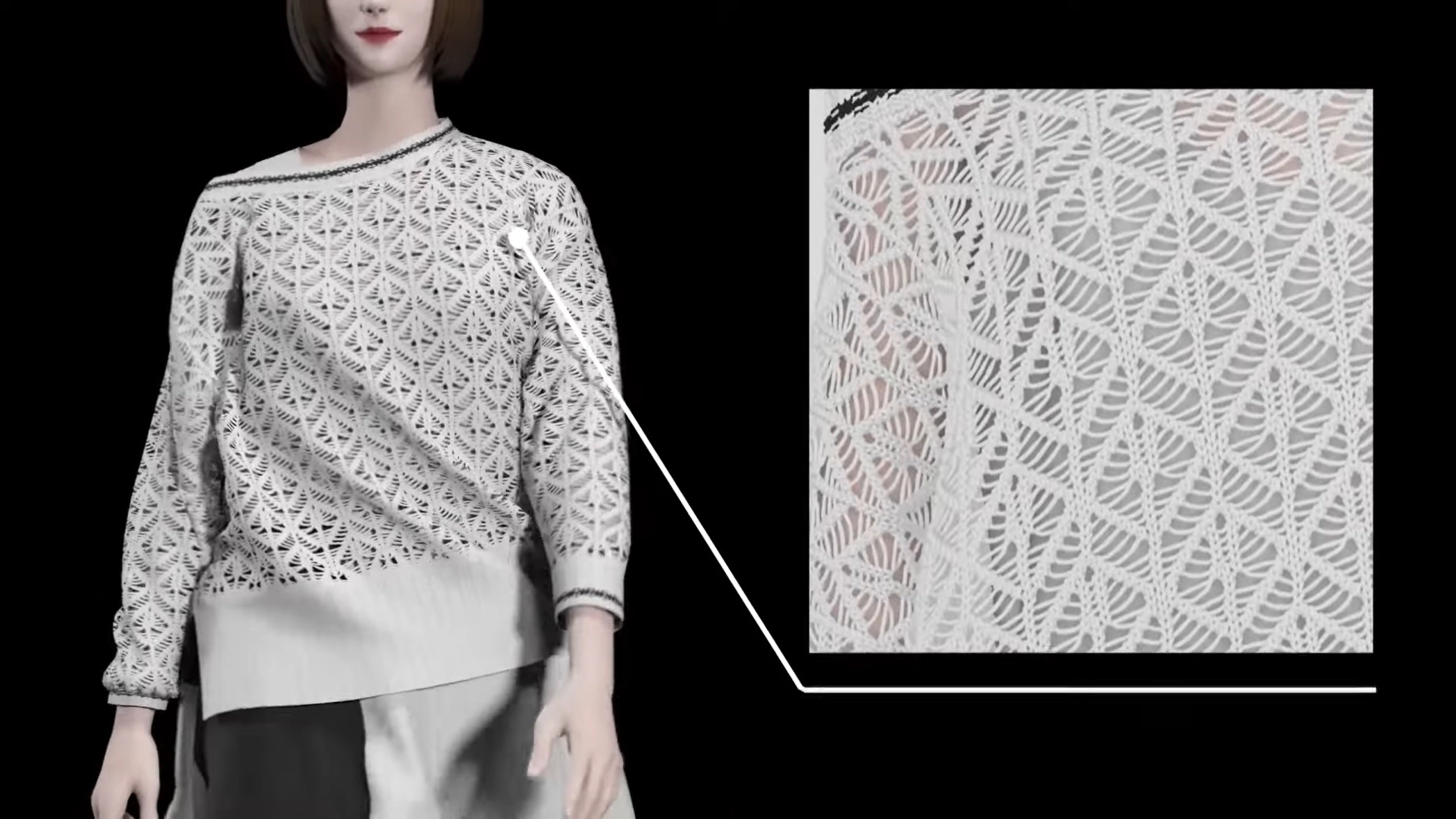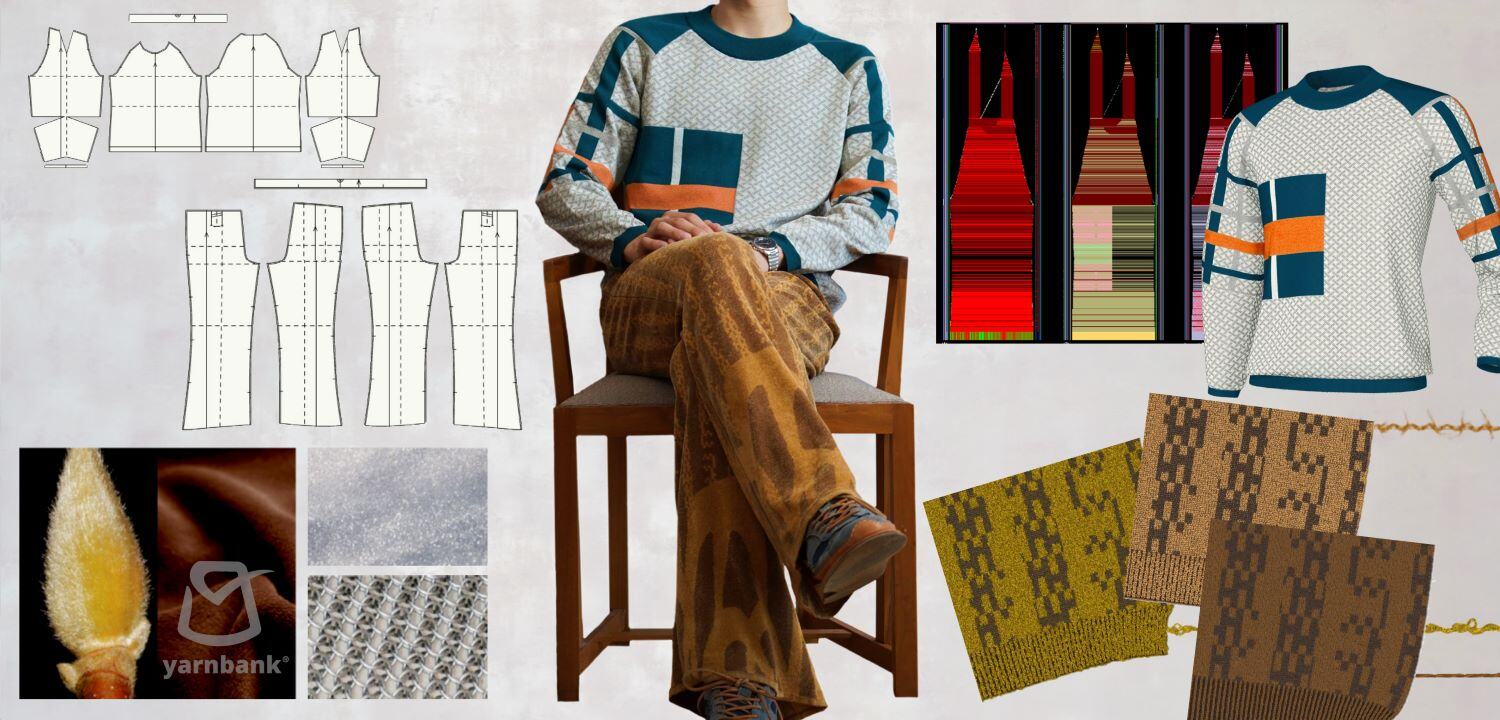Hello, everyone. Welcome to wearware, your go-to site for shaping the future of the fashion and apparel industry.
The fashion and apparel industry is rapidly embracing digital transformation, and the way we shop is evolving along with it. We’ve all grown accustomed to online shopping through e-commerce sites, but have you ever thought about taking it a step further? Enter virtual shops—an exciting new way to experience shopping like never before.
In this article, we look into what virtual shops are, explore their benefits, check out some real-world examples, and even share insights on how to create one. Ready to discover the future of fashion retail? Let’s get started!
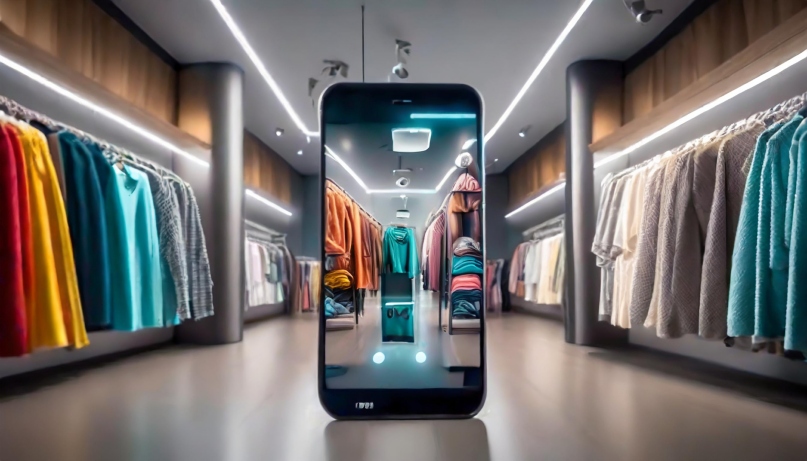
Table of Contents
- What is a Virtual Shop?
・The Impact and Benefits of Virtual Shops
・The Disadvantages of Virtual Shops - Awareness of Virtual Shops
- Companies and Brands in the Apparel & Fashion Industry Using Virtual Shops
・Alo Yoga
・Burberry
・J.Crew / Balenciaga
・Baidu - How to Create a Virtual Shop
・Converting a Physical Store into a Virtual Shop
・Designing a 3D Virtual Shop from Scratch
A virtual shop is a digital store created on the web using 3D and VR technology. You might also hear it referred to as a virtual store. Unlike traditional e-commerce shopping, virtual shopping offers a completely new experience. Users can explore the store as if they were physically walking through it, browsing products in an immersive way—just like shopping in a real brick-and-mortar store.
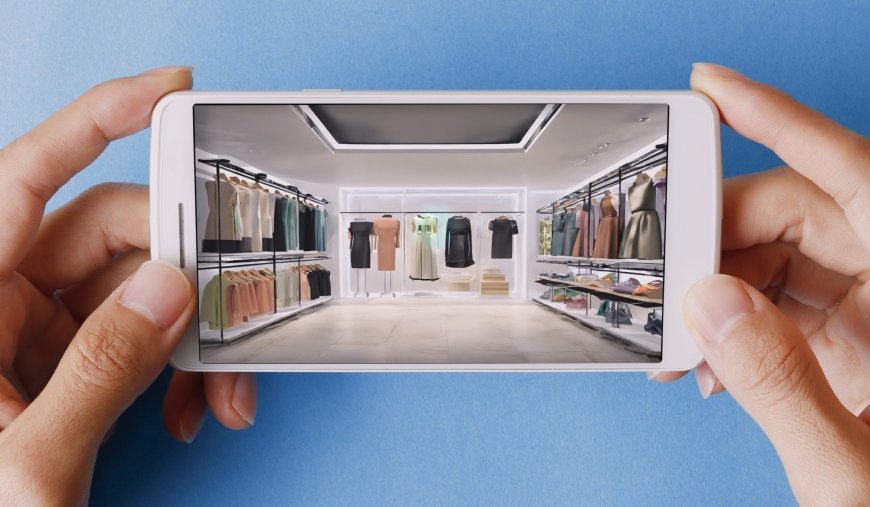
The Impact and Benefits of Virtual Shops
Attracting New Customers
Since virtual shops eliminate the need for a physical store visit, they allow brands to reach a much broader audience across regions and even countries. Unlike traditional e-commerce, virtual shops offer a fresh and immersive experience, making them particularly appealing as a marketing strategy for younger generations.
Expressing Brand Identity Beyond E-Commerce
Many physical stores use spatial design to create an atmosphere that reflects their brand identity. With 3D technology and visual effects, virtual shops can go beyond the limitations of traditional 2D e-commerce sites. Just like a physical store, they allow brands to showcase product displays, store layouts, and interior designs—offering customers a more immersive brand experience.
Higher Conversion Rates* and Enhanced User Data Analysis
Since virtual shops replicate the ambiance and storytelling of physical stores, they boost customer engagement and purchasing intent. Additionally, brands can analyze user behavior and preferences to improve marketing strategies and product development. By offering personalized recommendations and tailored shopping experiences, customer satisfaction and loyalty can significantly increase.
* Conversion Rate : The percentage of virtual shop visitors who complete a desired action, such as making a purchase or requesting information.
Lower Operating Costs Compared to Physical Stores
Running a virtual shop drastically reduces fixed costs, such as rent and utility expenses required for a physical store. Additionally, digital tools can help cut down on operational costs like staffing, making it a cost-efficient alternative.
The Disadvantages of Virtual Shops
Reduced Direct Interaction with Customers
Since virtual shops lack face-to-face interaction, brands need to implement creative online engagement strategies to enhance the customer experience and build stronger relationships with shoppers.
Increased Competition and the Need for Differentiation
As online shopping—including virtual shops—continues to grow, market competition is becoming fiercer. This makes it crucial for brands to stand out by ensuring originality and a unique shopping experience to attract and retain customers.
Dependence on IT Technology and Associated Risks
There is always a possibility of technical issues, such as system failures or bugs, which could disrupt operations. Additionally, brands must take data protection and cybersecurity seriously to ensure the safety of customer information and maintain trust.
While virtual shops offer numerous benefits and opportunities, they also come with certain drawbacks. By understanding both the advantages and disadvantages, and implementing effective strategies to address potential challenges, brands can leverage virtual shops to deliver a richer, more engaging shopping experience for their customers.
Awareness of Virtual Shops

The level of awareness and adoption of virtual shops varies across different regions and generations. Below is an overview of the current landscape in key markets.
The United States
In the U.S., interest in the metaverse, AR, and VR technologies has been growing, particularly among Gen Z and Millennials. Virtual try-ons and 3D shopping experiences are becoming more common, reflecting a shift in consumer behavior. According to a PwC survey, 66% of U.S. business leaders are actively investing in metaverse-related initiatives. Major brands like Nike, Gucci, and Ralph Lauren have already launched virtual stores, leveraging these technologies to enhance digital customer engagement. However, despite industry enthusiasm, actual consumer adoption remains relatively low. Some reports indicate that less than 10% of general consumers actively use virtual shopping platforms. To drive wider adoption, further improvements in user experience and accessibility will be key.
China
In China, both the awareness and adoption of virtual shops are significantly high, with strong integration between live commerce and the metaverse. Major e-commerce platforms like Alibaba and JD.com are actively expanding their virtual store offerings, particularly through live-stream shopping, which has become a dominant trend.
Additionally, the use of WeChat Mini Programs for virtual stores is on the rise, allowing consumers to experience AR try-ons and 3D showrooms directly from their smartphones. This technological advancement has heightened consumer interest in virtual shops, influencing purchasing behavior and further driving the growth of the digital retail space.
Europe
In Europe, awareness of virtual shops is high, but interest and adoption levels vary by region. Fashion and luxury brands in countries like France and the UK have embraced virtual try-ons and digital twin technology, creating immersive digital experiences tailored to high-end consumers. Meanwhile, in Germany and Nordic countries, sustainability plays a key role in shaping virtual shopping trends. AR and VR are increasingly used as tools to reduce environmental impact, aligning with the region’s strong emphasis on eco-conscious retail solutions. Overall, Europe is actively developing virtual shops to enhance customer experiences, and the market is expected to expand further as digital innovation continues to evolve.
Japan
In Japan, around 30% of consumers are aware of virtual shops. However, among those familiar with the concept, nearly half have used them, and over 90% of users express a desire to continue using them. A notable trend is the strong engagement among women in their 20s, with approximately half of them making actual purchases through virtual shops—a significantly higher rate compared to other age groups. As for the most commonly considered and purchased products, food, beverages, daily necessities, clothing, fashion items, and accessories are at the top of the list. This indicates that Japan’s virtual shop adoption is primarily driven by younger consumers, and the market is expected to grow further in the coming years.
Across different regions, the awareness and adoption of virtual shops vary depending on local culture and market trends. However, each region is developing its own unique approach to integrating virtual shopping into the retail landscape. With ongoing technological advancements, virtual shopping experiences will continue to evolve and diversify, shaping consumer purchasing behavior on a global scale.
Companies and Brands in the Apparel & Fashion Industry Using Virtual Shops
Alo Yoga

From Alo Yoga Immersive Store ( https://www.aloyoga.com/en-jp/pages/immersive-store )
Los Angeles–based athleisure brand Alo Yoga offers a unique immersive virtual store that blends physical retail with digital innovation.
Their “Immersive Store” is a fully interactive 3D environment designed to reflect the brand’s wellness philosophy and yoga lifestyle. Users can explore the virtual boutique using an avatar, browse digital displays of apparel, yoga gear, and accessories, and access direct purchase links.
The space also includes a meditation lounge and digital studio zone, enhancing the experience beyond traditional shopping. Integrated media such as campaign videos and social content allow visitors to fully engage with the brand’s ethos. Through this virtual initiative, Alo Yoga is reaching digitally savvy Gen Z and millennial audiences, reinforcing its “Mindful Movement” identity while pushing the boundaries of customer engagement in a virtual retail space.
Burberry

From Burberry virtual popup store (https://row.burberry.com/burberry-ginza-virtual-pop-up/?language=en)
British luxury fashion brand Burberry has embraced digital innovation by launching its own virtual shopping experience. Using Matterport's 3D scanning technology, Burberry has created a digital replica of its physical stores, allowing users to explore them as if they were walking through the actual boutique—all from the comfort of their homes.
Inside the virtual store, products are tagged, enabling users to click on items to view detailed information and access the purchase page. Additionally, brand videos, Instagram content, and other interactive elements are integrated into the experience, offering a deeper immersion into Burberry’s brand identity. By seamlessly bridging online and offline retail, Burberry is redefining luxury shopping, enhancing customer engagement, and setting a new standard for digital fashion retail experiences.
J.Crew

From J.Crew's Virtual Closet for Apple Vision Pro (https://apps.apple.com/us/app/j-crew-virtual-closet/id6473550031)
The American apparel brand J.Crew has introduced a “Virtual Closet” powered by Apple’s spatial computing headset, Vision Pro. Leveraging its high-resolution display, eye- and hand-tracking interface, and immersive spatial audio, Vision Pro enables fashion brands to create fully interactive shopping experiences that fuse digital storytelling with real-world utility. In J.Crew’s Virtual Closet, users can view garments in 3D, consult with stylists via SharePlay, and co-shop with friends in real time—blending retail with social engagement.
Baidu

From official Baidu X post ( https://x.com/i/events/1478930087911182337 )
Baidu, China’s largest search engine operator, is also a major player in metaverse technology development. In December 2021, the company launched "XiRang", China’s first metaverse platform. This virtual city can accommodate up to 100,000 simultaneous users, allowing them to navigate the space as avatars, visit virtual shops and corporate booths, and participate in interactive events. The platform is also being utilized by educational institutions and businesses, serving as a hub for both commercial and cultural exchanges.
Baidu is leveraging XiRang to create virtual shops as part of its expanding digital ecosystem. Some brands have already launched 3D showrooms, where users can browse products in a fully immersive environment and access detailed product information. Additionally, Baidu is working on recreating iconic Chinese cities and cultural landmarks within the metaverse, integrating tourism and shopping into a single digital experience. Through these initiatives, Baidu is going beyond traditional online shopping, aiming to build a highly interactive and interconnected metaverse economy.
For more insights into digital fashion, be sure to check out this article.
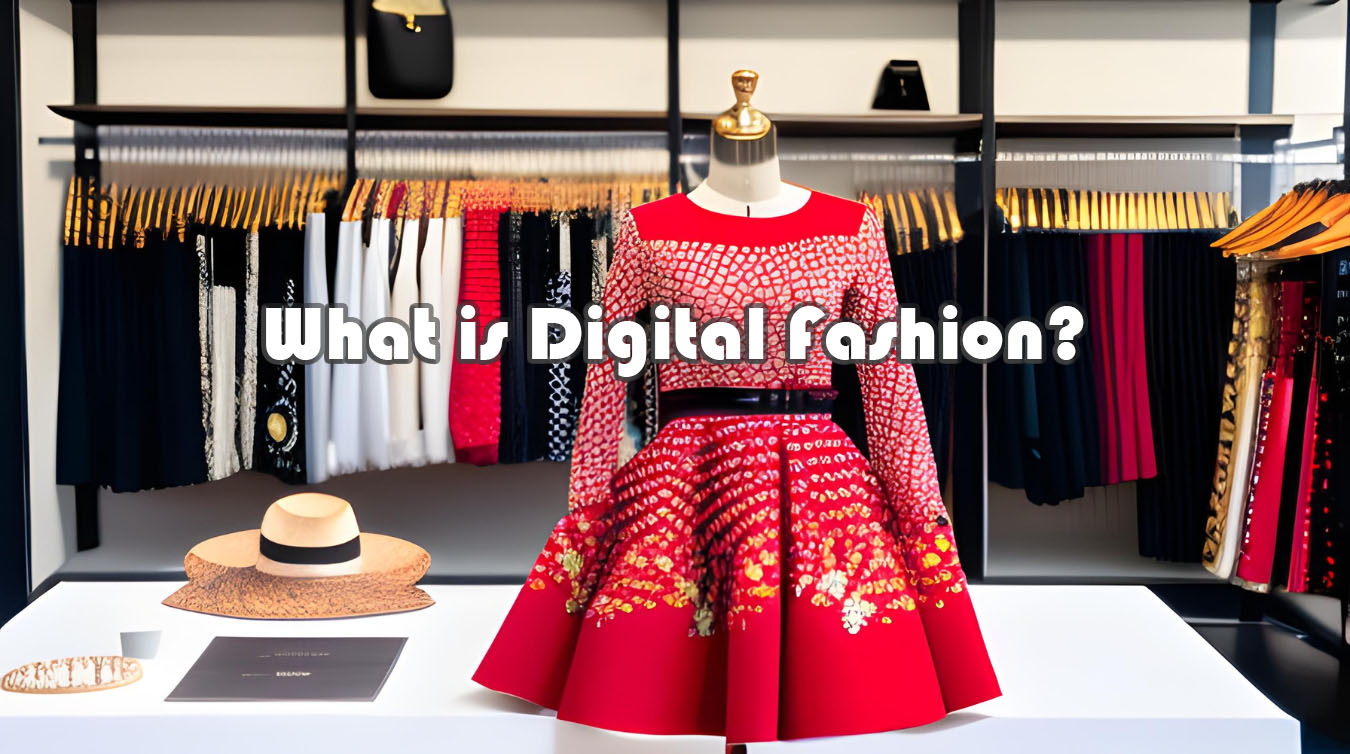
We’ll explore what digital fashion is, how it can be used, where you can get it, and explain the crucial role of the Metaverse and NFTs in this exciting new landscape!
Related Article
How to Create a Virtual Shop
Now that we’ve introduced several virtual shops, let’s take a closer look at how to actually create one. The process involves several key steps: first, designing the store layout, then generating the necessary 3D data, and finally, launching the shop online so that users can access it. There are two main approaches to creating a virtual shop. One option is to “convert an existing physical store into a virtual shop”, allowing customers to explore a digital replica of a real-world retail space. The other approach is to “design an entirely new store in 3D from scratch”, creating a unique virtual environment that doesn’t exist in the physical world. Both methods offer distinct advantages, depending on the brand’s objectives and the level of interactivity desired.
Converting a Physical Store into a Virtual Shop
When converting a physical store into a virtual shop, there are two main methods: 360-degree photography and geometric (3D) scanning.
360-Degree Photography
This method involves setting up a fixed shooting location and capturing a full 360-degree view of the surroundings. To change perspectives, the camera must be moved to different positions and shot again. Since the final result is a stitched panoramic image, it allows users to look around the space from a central point but does not fully recreate the depth or height of the environment. While it lacks the complete 3D realism of other techniques, 360-degree photography is a relatively simple and cost-effective way to create a virtual shop.
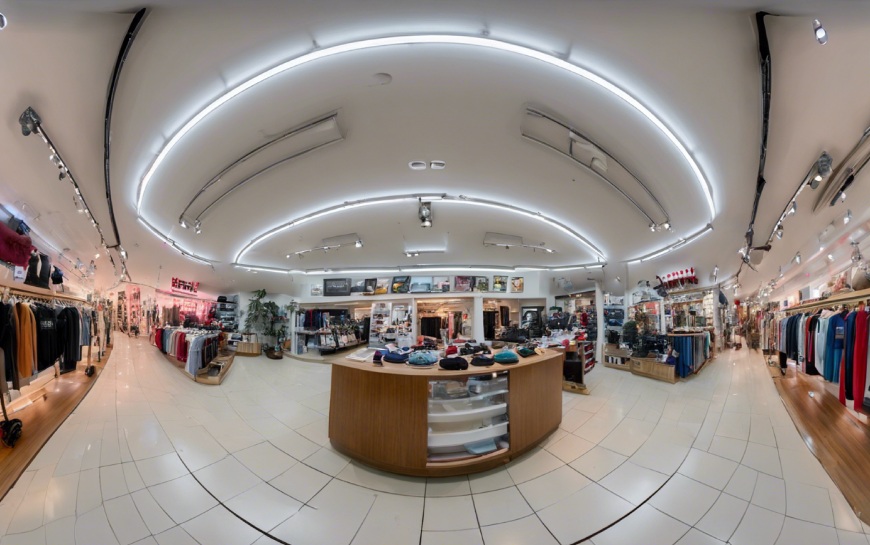
Refer to RICOH THETA’s official website (https://www.ricoh360.com/theta/)
Geometric (3D) Scanning
Geometric scanning captures shelves, clothing, and other store elements as 3D models, providing a highly realistic virtual shopping experience similar to a physical store. Previously, this technique required expensive equipment and specialized expertise, but recent advancements in 3D scanning technology have made it much more accessible. For example, in December 2024, the release of "QUICKSURFACE 2025" significantly improved CAD model creation from 3D scan data, offering faster processing and new functionalities to reduce the workload for designers. Additionally, in January 2025, the "FacTransFullbody" full-body 3D scanner debuted, enabling instant high-quality 3D scanning.
The latest smartphone technology has also contributed to making geometric scanning more accessible. The iPhone 16 Pro series, launched in September 2024, features a significantly enhanced LiDAR scanner, allowing for higher-precision 3D scans. While LiDAR scanning was first introduced in the iPhone 12 Pro, the newest models have improved speed and accuracy, producing even smoother and more detailed 3D models. Thanks to these innovations, high-quality virtual shops can now be built without requiring professional-grade equipment, making geometric scanning more widespread in the near future.
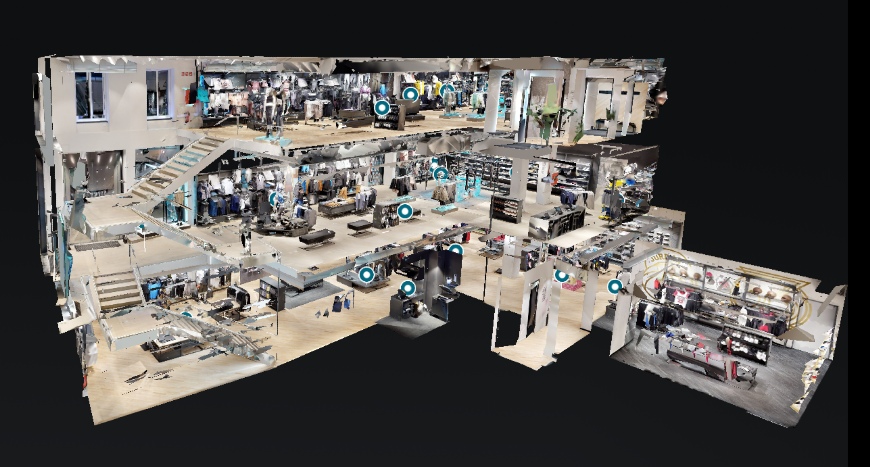
Nike Store Milano : From Matterport’s official website (https://discover.matterport.com/space/JVuiBtyUPoW)
When converting a physical store into a virtual shop, both methods come with their own advantages and disadvantages.
Advantages
- Compared to creating a 3D model from scratch, converting a physical store into a virtual shop allows for significant time savings and cost reduction.
- Since the virtual shop is an exact recreation of the real store, it provides a realistic atmosphere, allowing customers to feel as if they are physically present. Additionally, the walkthrough function enables users to move smoothly through the space, enhancing the immersive shopping experience.
Disadvantages
- If products need to be updated or replaced, the changes must first be made in the physical store, and then the photography or 3D scanning must be redone to reflect the updates in the virtual shop.
Designing a 3D Virtual Shop from Scratch
When creating a virtual shop that does not exist in the real world, everything from the floor, windows, and columns to shelves and fixtures must be modeled in 3D. This process requires the use of 3D CG software such as 3ds Max and Blender to design and build the digital space. Recently, 3D asset marketplaces have been expanding, allowing creators to purchase and download pre-made 3D models, which can help streamline the development process.

From TURBOSQUID’s official website (https://www.turbosquid.com/)
Advantages
- One of the biggest advantages of this approach is that a virtual shop can be created even if a physical store does not exist.
- Since the space is entirely digital, special effects and creative design elements can be incorporated to create an experience that goes beyond the limitations of real-world stores.
- Additionally, large-scale products that may be difficult to showcase in a physical store, as well as a wide variety of product variations, can be easily displayed in a virtual space. This also allows brands to exhibit prototypes of products before they are officially launched, offering customers a preview of upcoming releases.
Disadvantages
- Unlike scanning an existing store, this method requires a full store design process, which can be more time-consuming and costly. Since everything must be modeled from scratch, it involves a higher level of effort and expertise compared to simply capturing an existing physical space with a 3D scanner.
- Another potential downside is that, depending on the quality of the 3D modeling, the realism of the virtual shop may not be as high as a scanned reproduction of an actual store.
We’ve now explored the two main approaches to creating 3D data for virtual shops. Regardless of the method used, once the 3D data is complete, it must be uploaded online so users can access it through PCs or smartphones. Since working with 3D data requires specialized software, and the file sizes can be large, a high-performance PC is often necessary. While virtual shops are not yet fully mainstream, the industry is evolving rapidly, and more user-friendly services tailored for virtual shop creation are emerging.
One essential element in this process is 3D virtual samples, which serve as digital representations of products to be displayed in the virtual shop. You can learn more about 3D virtual samples in this article.
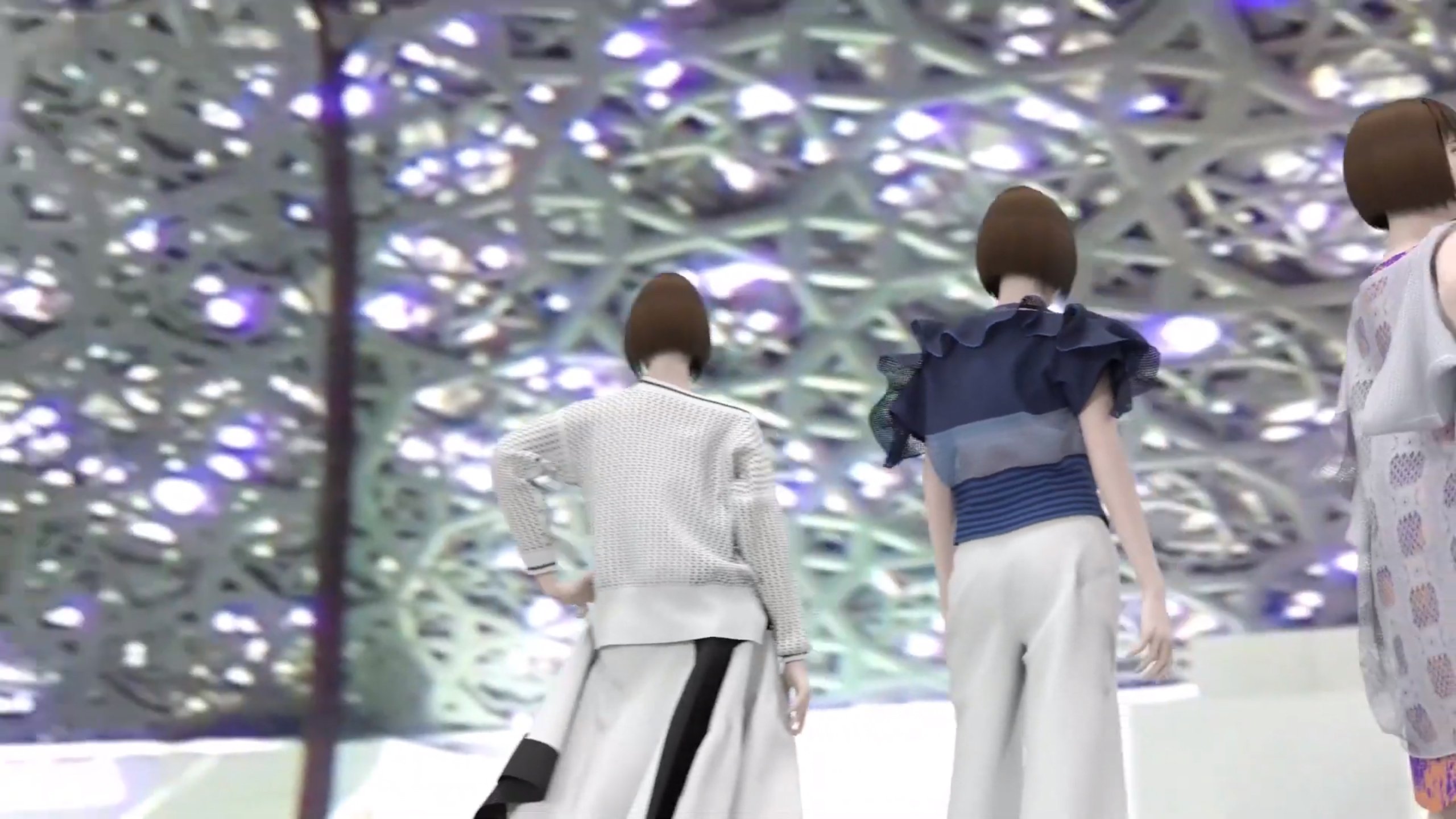
Virtual Samples: The Savior of the Apparel and Fashion Industry?
Today, let's dive into the game-changing world of "virtual samples," which is key to making our industry more sustainable by cutting down on sampling time and costs.
Related article
If you are considering creating virtual samples, we highly recommend APEXFiz®, a 3D design software developed by SHIMA SEIKI specifically for the apparel industry. For more details, be sure to check out this article.

When planning fashion and apparel products, what software do you use? From CLO3D, Browzwear and Optitex to the familiar Adobe suite, there are certainly many options out there. This time we introduce APEXFiz®, a design software that is extremely useful for everything from planning and production to e-commerce.
Related Article
In the future, we may see more brands launching virtual shops and utilizing them as a new sales channel.
We hope this article has given you a sense of how virtual shops represent the future of shopping, offering a unique and engaging experience like never before. The technology surrounding virtual shops will continue to advance and we can look forward to further opportunities for consumer engagement.
wearware supports the digitalization of fashion design.
Stay tuned for more updates!
